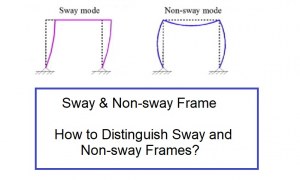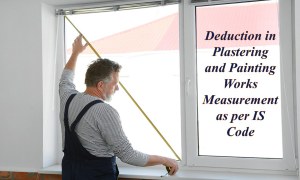🕑 Reading time: 1 minute
Detailed tests on building lime are conducted in laboratory as per Indian Standard code, IS 6932-1973 to check quality and composition of lime suitable as a building material. These tests on building lime is generally are divided into two main classifications: the routine tests and the special tests. A detailed explanation of different tests that comes under each of this classification is explained below.
Contents:
Laboratory Tests on Building Lime as per Indian Standards
The different test that is conducted under routine tests on building limes are:1. Determination of Residue on the Slaking of Lime
This test is provided in IS 6932 (Part 3). Initially, the sample for testing is sieved through 2.36mm IS sieve. The residue if present is broken and again it is sieved. The process is repeated till the whole sample pass through the sieve. The quantity of water that is required for the slaking is equal to four times the mass of the quicklime. Note: For high calcium lime the amount of water will be equal to eight times the mass of the sample. Two samples must be prepared, of quicklime, with a weight of-of, 5 kg is slaked, by adding them in smaller quantities with the water in required quantity. This must be maintained at 50 and 100 ± 2 degree celsius with 5 minutes. The mix is continuously stirred continuously at this temperature maintained, and allow to stand for 24 hours. In this standing period, only twice the stirring is carried out. The last stirring is carried out one hour before the commencement of the standard 24 hours. The supernatant liquid is allowed to pass through an 850 micron IS sieve then through a 300 micron IS sieve. The remaining is again stirred and again passed through the same sieve. The residue that is obtained is washed and dried at a temperature of 100±10 degree Celsius to a constant mass. The residues are obtained for two samples that are weighted separately and designated as the percent of the mass of the quicklime test sample.2. Fineness Test on Building Lime
This test is carried out based on IS: 6932 (Part 4). A 100 g of hydrated lime is undergone sieve test. The arrangement consists of sieves arranged in such a way that the coarser sieves are placed at the top in a decreasing manner. With the help of a moderate jet of water, the hydrated lime is washed through the sieve from the top, in not more than 30 minutes. The Residue on each of the sieve is dried at a temperature of 100±10 degree Celsius to a constant mass and is weighed. The obtained is percentage mass of the hydrated lime sample.3. Workability Tests on Building Lime
Workability tests on building lime is carried out in the standard flow table that is shown in the figure below.
Fig.1: Standard Flow Table Apparatus for Workability of Building Lime
To test the hydrated lime, at a temperature of 27 ± 2 oC 500g of hydrated lime is mixed with an equal mass of water. This mixture is allowed to stand for 224 hours. The material is allowed twice to pass through the mixer, to make a form of plastic putty. The lower part of the lime putty is spread to a thickness of 110 mm when it is subjected to a bump in the standard flow table. No deviation more than 1 mm is expected. More water is added if it is stiff. If water is more, it is allowed to withdraw, by placing over a dry absorbing surface. This is how the lime putty sample will acquire the standard consistency. This sample is filled inside the molds. The temperature maintained is 27 ± 2 oC. Care is taken not to fill the molds with air bubbles. The top of the cone is cleaned and leveled. The cone with the material is placed in the center of the table, and the mold is removed At a rate of one turn per second, the handle of the table is turned. The spread of material is the average of three diameters that are measured with a 60-degree gap. This is actually average diameter that is obtained.4. Soundness Tests on Building Lime
This is conducted in the Le Chatelier apparatus, that would help in determining the quality of the lime. The quality in the sense will help in knowing the unsoundness or the disintegration property of the material. There are chances of presence of overburnt material called the cores, that if used in plastering, they remain hydrated and with time they pop out. This phenomenon is undesirable and is called as popping. So, to reduce this effect the material used for the same must completely slaked that is free from overburnt material. The test is carried out following the mix ratio 1:3:12 as cement to hydrated lime to standard. The mixture taken is gauged and mix with water. The quantity of water taken is 12 percent by mass of the weight of the dry mixture. Three test molds are greased and filled with the above-prepared mix. The mold is placed over a standard dry plate. The three molds are now covered with a non-porous plate. A small weight is placed on the three of the molds and kept undisturbed for a period of 1 hour. The distance between the indicator is measured. It keeps it in damp air and then in steam at atmospheric pressure for 48 and 3 hours respectively. Then allowed to cool and the distance between the pointers are measured. To consider the expansion of cement, a reduction of 1 mm is made of the obtained values. The effectiveness of lime slaking and its quality is checked through this method.5. Setting Time Tests on Building Lime
This test is as per IS:6932 PART 11. The Vicat's apparatus is used and tested similarly to the test conducted for Portland cement.6. Strength Tests on Building Lime
This test is carried out as per IS:6932- Part 7.Compressive strength:
Sample: 12 numbers of 50mm cube Mix: Standard lime to sand mortar in 1:3 mix Temperature Conditions: 72 hours in humidity (90%) then placed in air for 4 days 6 out of 12 cured in water for 7 days. The 14-day compressive strength is determined after at a gradual load of 150N per minutes till specimen crushes. Remaining 6 samples cured for 21 days and 28-day compressive strength is determined. The average strength of samples at 14 and 28 days are obtained.Transverse Strength Test:
Sample: 25 x 25 x 100 mm mortar specimens Mix: standard lime to sand at 1:3 ratio Cured for 28 days with the mold with the help of a contained at 90 % relative humidity and a temperature of 27± 2oC. At the end of the 28 days, the mold is removed and the specimen is cured in water for 30 minutes. The specimen is tested on a transverse testing machine, placing over 2 rollers placed at a space of 80mm. The concentrated load is applied at the center uniformly at a rate of 150± 15N per minute till the specimen breaks. The modulus of rupture or the transverse strength at 28 days is given by W = Breaking Load
L is the spacing between the rollers. The breadth and the depth of the specimen are b and h respectively.
Read More:
Laboratory Testing of Lime to be Used as a Building Material in Construction
Field Tests on Building Lime for Quality in Construction Works
Classification of Lime as a Building Material for use in Construction
Building Lime – Properties of Lime, Advantages and Uses in Construction
W = Breaking Load
L is the spacing between the rollers. The breadth and the depth of the specimen are b and h respectively.
Read More:
Laboratory Testing of Lime to be Used as a Building Material in Construction
Field Tests on Building Lime for Quality in Construction Works
Classification of Lime as a Building Material for use in Construction
Building Lime – Properties of Lime, Advantages and Uses in Construction 


